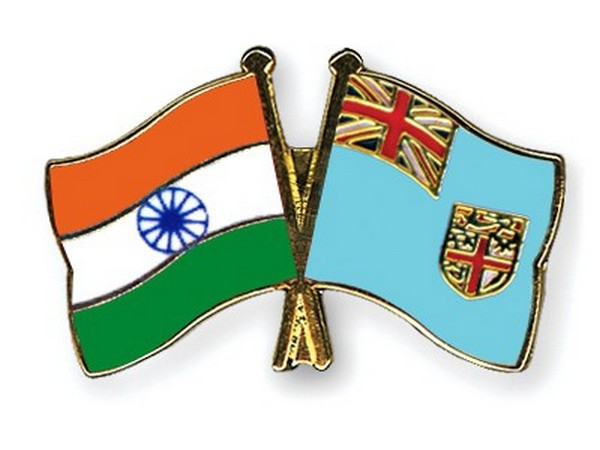In the azure expanse of the Pacific, where turquoise waves meet vibrant cultures, the bond between India and Fiji stands as a testament to shared history, mutual respect, and dynamic collaboration. Rooted in the legacy of the Indian diaspora and bolstered by high-level diplomatic engagements, this relationship has evolved into a multifaceted partnership that spans trade, development, and cultural exchange. As Fiji’s Indian-origin population and India’s strategic outreach continue to shape this alliance, the ties between New Delhi and Suva are poised for a promising future.
A Historical Tapestry Woven by Migration
The story of India-Fiji relations begins in 1879, when the first Indian laborers arrived on Fiji’s shores under the British indenture system. Over the next four decades, approximately 60,553 Indians were brought to work on sugarcane plantations, laying the foundation for a vibrant Indian diaspora. Known as Girmitiyas, these workers endured hardships but also enriched Fiji’s cultural mosaic. By the early 20th century, Indian traders joined the diaspora, further deepening ties. Today, around 300,000 people of Indian origin—comprising 37% of Fiji’s population—alongside 2,300 Indian nationals, form a vital bridge between the two nations.
The diplomatic journey began even before Fiji’s independence in 1970, with India establishing a Commissioner’s post in 1948 to safeguard the interests of its diaspora. This evolved into a High Commission post-independence, while Fiji reciprocated by opening its High Commission in New Delhi in 2004. Despite challenges, such as the closure of India’s High Commission and Cultural Centre following the 1987 coups, both nations have nurtured their ties with resilience, reopening these institutions in 1999 and 2005, respectively.
High-Level Engagements: Milestones of Diplomacy
The modern chapter of India-Fiji relations has been marked by significant high-level visits that underscore mutual priorities. A landmark moment came in November 2014, when Prime Minister Narendra Modi visited Fiji, the first Indian prime minister to do so in over three decades. This visit, coinciding with the inaugural Forum for India-Pacific Islands Cooperation (FIPIC) Summit, cemented India’s commitment to the Pacific region. Three Memoranda of Understanding (MoUs) were signed, covering a co-generation plant supported by a Line of Credit, diplomatic training, and land allocation for diplomatic missions—signaling a new era of cooperation.
More recently, External Affairs Minister Dr. S. Jaishankar’s visit to Fiji in February 2023 for the 12th World Hindi Conference in Nadi further strengthened ties. In Suva, he signed a Visa Waiver Agreement, launched a solarisation project at the State House under the India-UN Development Partnership Fund, inaugurated the renovated Girmit Gallery, and unveiled a bust of Sardar Vallabhbhai Patel at India House. His engagements with Fiji’s leadership and the Indian diaspora highlighted the cultural and emotional bonds that underpin this partnership.
In February 2025, Dr. Jaishankar met Fiji’s Prime Minister Sitiveni Rabuka on the sidelines of the Munich Security Conference, reaffirming the commitment to deepen bilateral ties. This was followed by Minister of State for External Affairs Pabitra Margherita’s visit to Fiji in May 2025 as the Guest of Honour at the Girmit Day Commemoration. The visit saw the signing of an MoU recognizing the Indian Pharmacopoeia, a significant step in enhancing healthcare cooperation.
A Pillar of Development Partnership
India has emerged as a key development partner for Fiji, supporting its nation-building efforts across critical sectors. From infrastructure to capacity building, India’s contributions have been transformative. The solarisation project at the State House, the co-generation plant, and initiatives in healthcare and education reflect India’s commitment to Fiji’s sustainable development. The Indian Cultural Centre in Suva, reopened in 2005, serves as a hub for cultural exchange, offering classes in yoga, Hindi, and Indian classical arts, fostering people-to-people connections.
Capacity building has been a cornerstone of this partnership. Through programs like the Indian Technical and Economic Cooperation (ITEC), India has trained Fijian professionals in fields ranging from IT to public administration. Scholarships for higher education in India further strengthen these ties, empowering Fiji’s youth with skills and opportunities.
Cultural and People-to-People Bonds
The Indian diaspora in Fiji is not just a demographic presence but a vibrant force that shapes the nation’s identity. The Girmit Day commemorations, marking the arrival of the first Indian laborers, are a poignant reminder of shared struggles and triumphs. The renovated Girmit Gallery in Suva stands as a tribute to this legacy, preserving the stories of resilience and contribution. Events like the World Hindi Conference and the presence of Indian professionals in sectors like IT, finance, education, healthcare, and hospitality further enrich Fiji’s multicultural fabric.
As India and Fiji navigate the complexities of the 21st century, their partnership is poised to grow stronger. India’s vision for the Indo-Pacific, articulated through initiatives like FIPIC, aligns with Fiji’s aspirations for sustainable development and regional cooperation. The Visa Waiver Agreement and healthcare collaborations signal a deepening of trust, while cultural exchanges continue to bridge hearts across the Pacific.
From the sugarcane fields of the 19th century to the diplomatic summits of today, India and Fiji have woven a rich tapestry of friendship. With shared values, mutual respect, and a commitment to progress, this partnership is set to shine as a beacon of cooperation in the Indo-Pacific and beyond.










